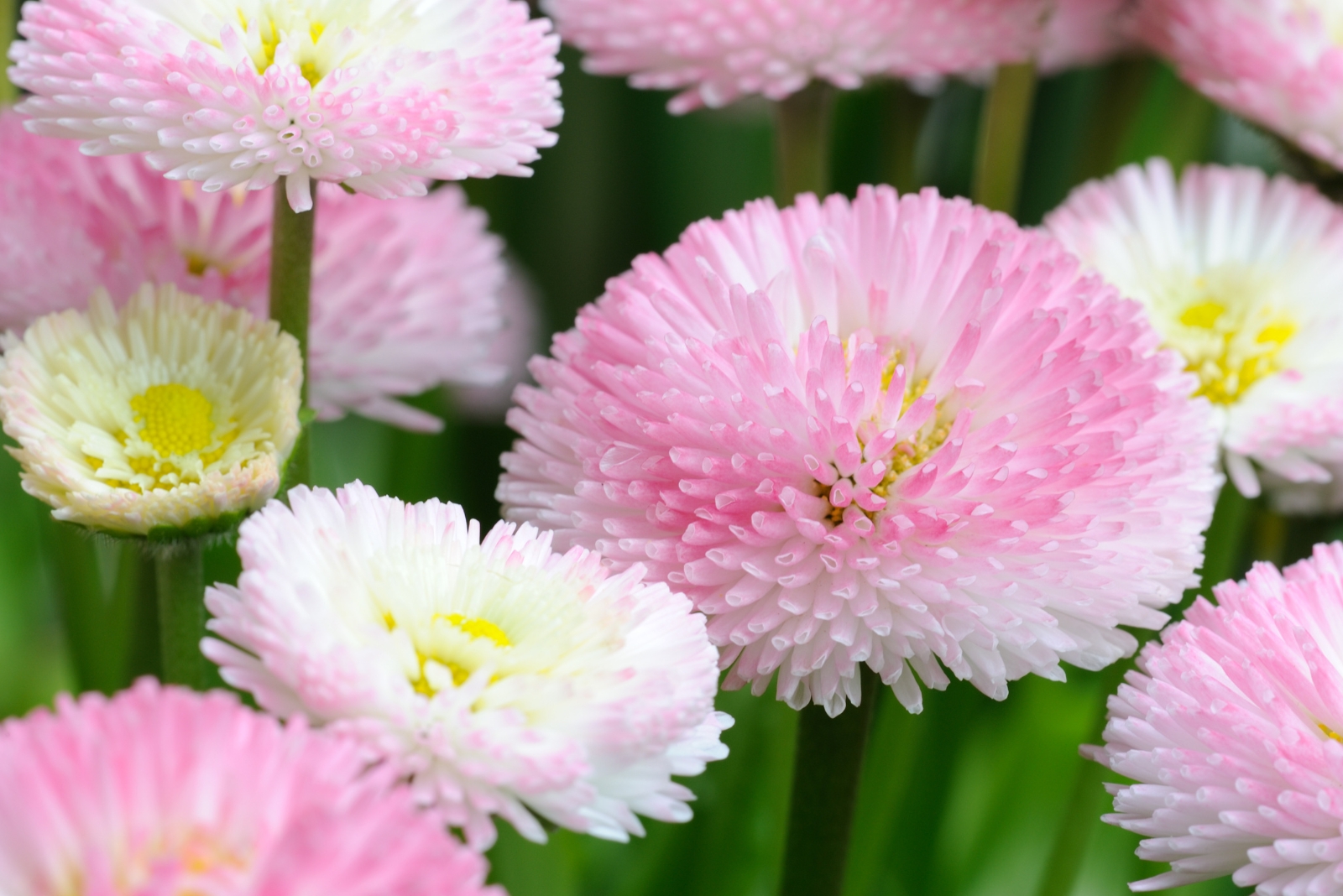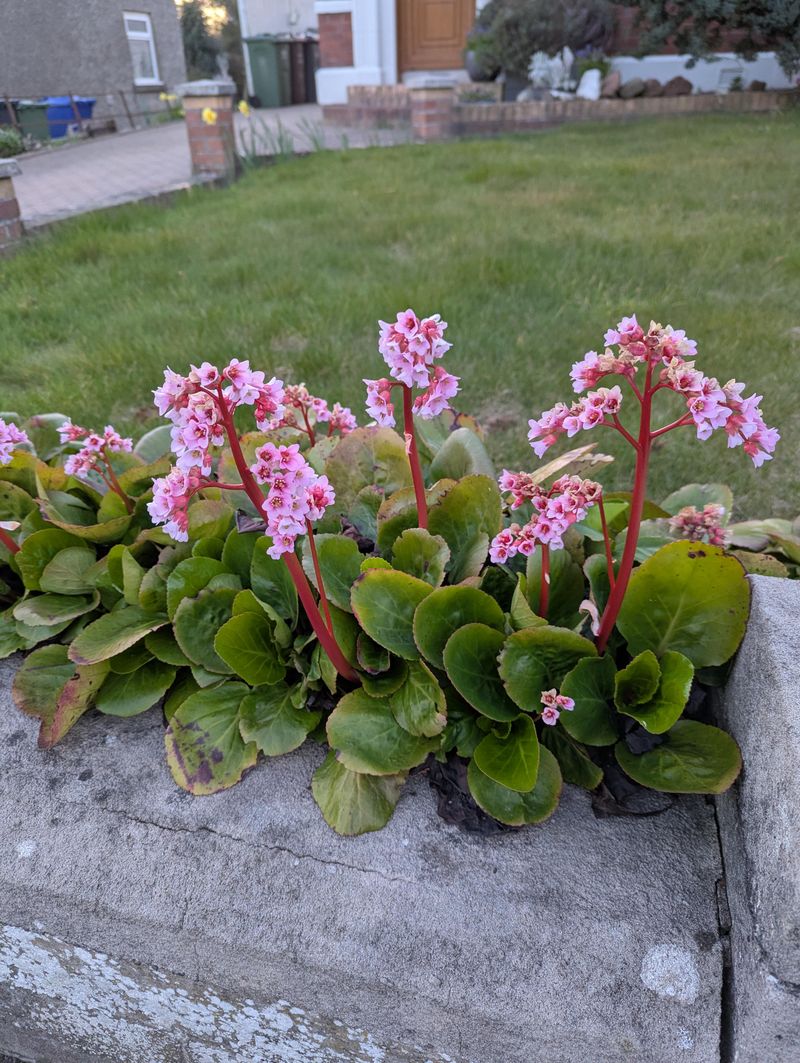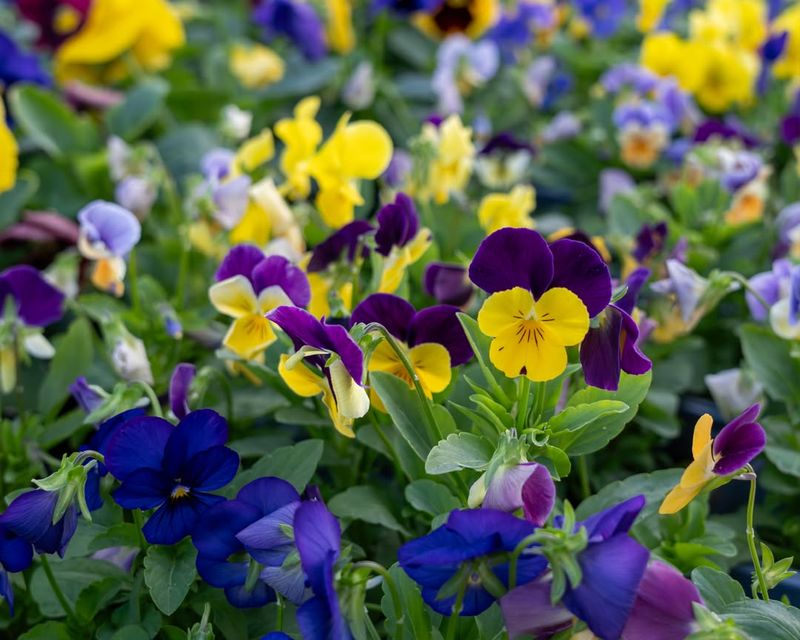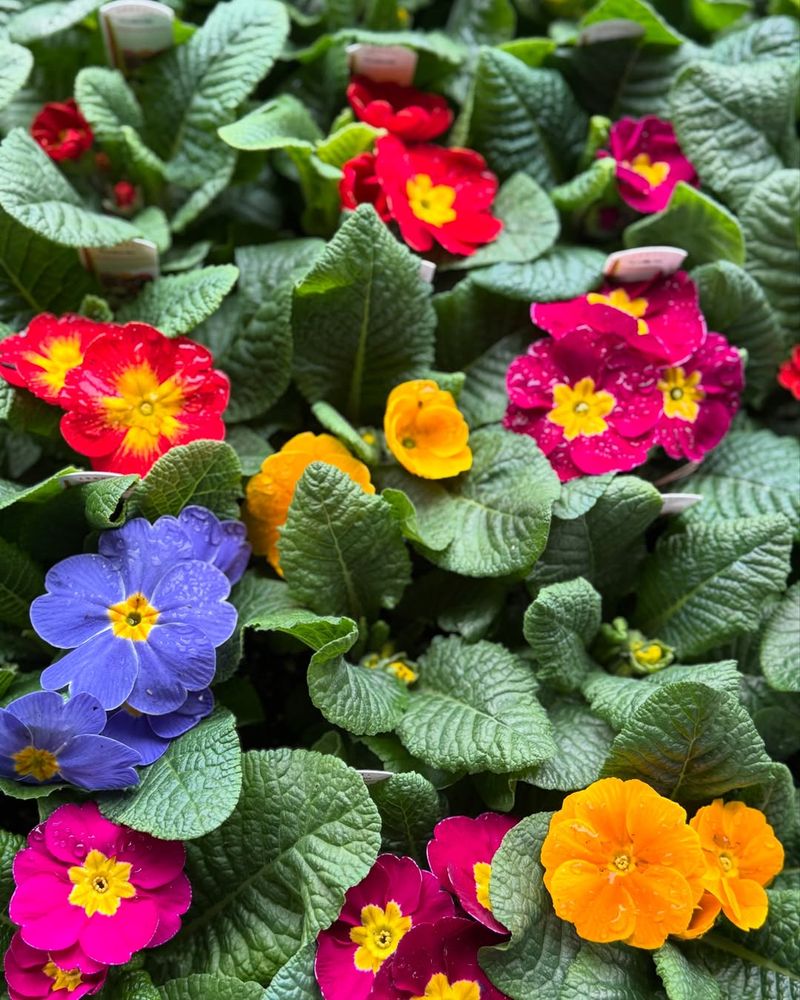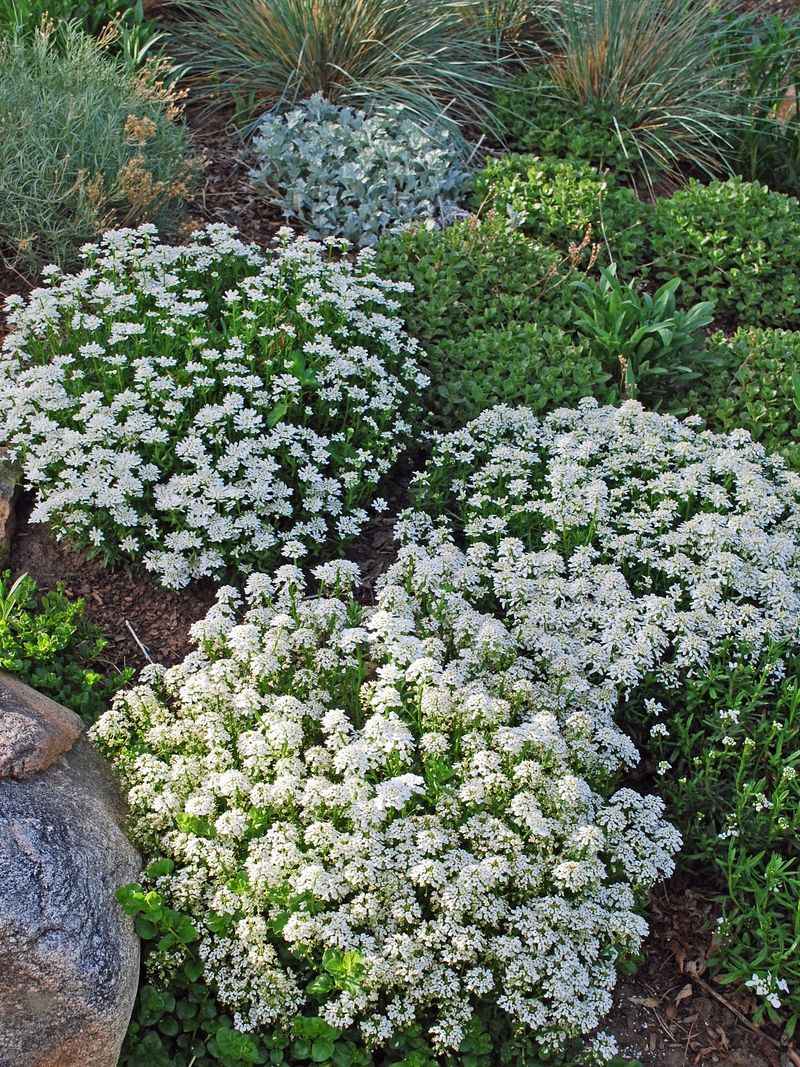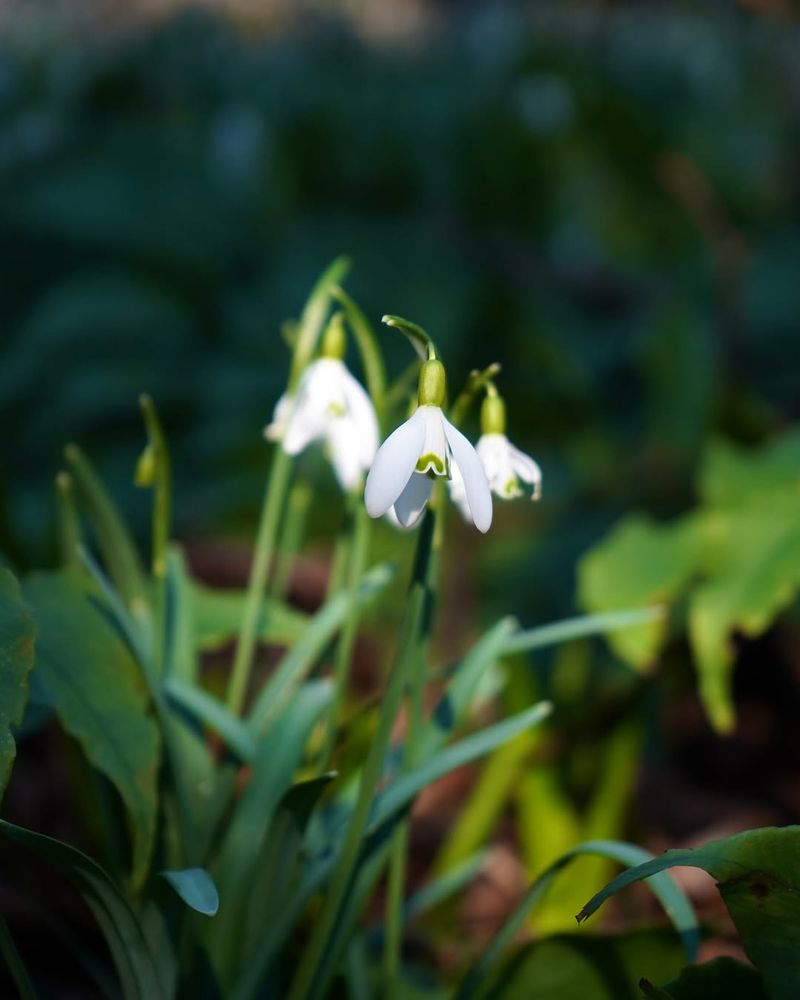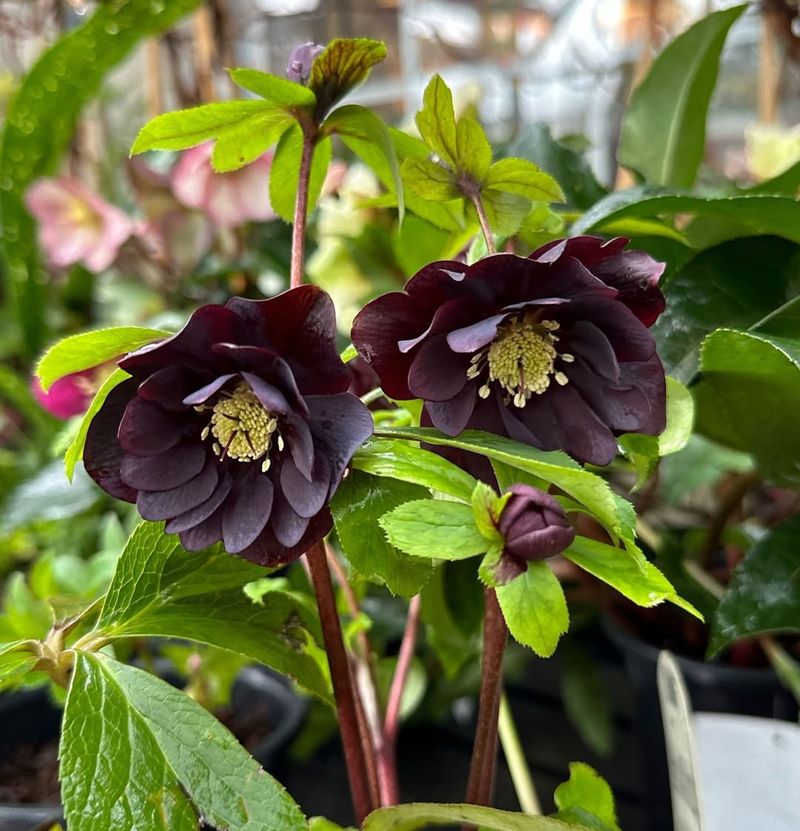Winter in Colorado doesn’t mean your garden has to look lifeless and dull. Plenty of tough perennials can handle freezing temperatures and still produce beautiful flowers when snow is on the ground.
Choosing the right plants means you’ll enjoy color and life in your yard all year long. Get ready to discover some amazing cold-weather champions that’ll make your neighbors wonder how you did it.
1. Hellebores (Christmas Rose)
Often called the Christmas Rose, hellebores start blooming as early as late December in Colorado. Their thick, leathery leaves and sturdy stems laugh at snow and ice.
Flowers come in shades of white, pink, purple, and even green, nodding gracefully toward the ground. Plant them in partial shade with well-drained soil, and they’ll reward you for years.
Once established, these beauties need very little care and spread slowly to form lovely clumps.
2. Winter Jasmine
Bright yellow blooms appear on bare green stems before any leaves show up, creating a stunning contrast against white snow. Winter jasmine is actually a shrub-like perennial that cascades beautifully over walls or slopes.
It starts flowering in January or February when most gardens look bleak and gray. Full sun to partial shade works best, and it tolerates Colorado’s dry conditions once established.
Prune after flowering to keep it tidy and encourage more blooms next year.
3. Bergenia (Pigsqueak)
Bergenia earns its quirky nickname from the squeaking sound its leaves make when rubbed together. Large, glossy leaves turn beautiful shades of bronze and red in cold weather, adding interest even before flowers appear.
Pink or magenta blooms rise on thick stalks in late winter or early spring in Colorado. These plants handle full sun to shade and prefer moist, well-drained soil.
They’re nearly indestructible and deer usually leave them alone too.
4. Crocus
Among the earliest Colorado bloomers, crocuses push through snow like tiny colorful soldiers announcing spring’s arrival. Purple, yellow, white, and striped varieties pop up in February or March depending on your elevation.
Plant bulbs in fall about three inches deep in sunny spots with good drainage. They naturalize easily, meaning they’ll multiply and spread over time.
Squirrels and chipmunks love the bulbs, so consider using wire mesh if critters are a problem.
5. Pansies and Violas
With cheerful faces in every color imaginable, pansies and violas keep blooming right through Colorado’s coldest months. They might look delicate, but these little powerhouses bounce back even after being buried under snow.
Plant them in fall for winter color, choosing a sunny spot with decent soil. Deadhead spent flowers regularly to encourage more blooms.
When temperatures drop below zero, they’ll pause but resume flowering once things warm up slightly.
6. Primrose (Primula)
Primroses bring jewel-toned colors to shady winter gardens when almost nothing else dares to bloom. Low-growing rosettes of wrinkled leaves produce clusters of flowers in reds, pinks, yellows, and purples.
They prefer cool temperatures and actually struggle in summer heat, making Colorado winters perfect for them. Plant in partial shade with rich, moist soil.
Divide clumps every few years to keep them vigorous and blooming their best.
7. Candytuft (Iberis)
Evergreen foliage stays dark green all winter, topped with masses of pure white flowers that look like fluffy clouds. Candytuft starts blooming in late winter and continues into spring, creating a spectacular show.
It forms neat mounds perfect for edging paths or Colorado rock gardens. Full sun and well-drained soil keep it happy.
After the main bloom, shear plants back lightly to encourage bushier growth and possibly a second flowering later.
8. Snowdrops (Galanthus)
True to their name, snowdrops literally bloom through snow, their delicate white bells nodding gracefully above the frozen ground. They’re among the very first flowers to appear in Colorado, sometimes in January.
Plant bulbs in fall in partial shade with moist, rich soil that drains well. They naturalize beautifully and will form charming colonies over time.
Once flowering finishes, let the foliage die back naturally to feed the bulbs for next year’s display.
9. Lenten Rose (Helleborus Orientalis)
A cousin to the Christmas rose, Lenten roses bloom slightly later but offer an even wider range of colors and patterns. Speckled, veined, and solid blooms in creams, purples, pinks, and near-blacks create an artist’s palette in your garden.
They thrive in shade and tolerate Colorado’s clay soils better than many perennials. Evergreen leaves look good year-round.
Remove old foliage in late winter before new growth emerges for the tidiest appearance.
10. Creeping Phlox (Phlox Subulata)
While peak bloom comes in spring, creeping phlox often starts flowering in late winter during warm spells in Colorado. It forms dense mats of needle-like evergreen foliage covered in pink, purple, white, or red flowers.
Perfect for slopes, rock gardens, or anywhere you need tough ground cover. Full sun and good drainage are essential.
Shear back after flowering to keep plants compact and encourage denser growth for an even better show next season.
11. English Daisy (Bellis Perennis)
Cheerful little daisies with pink, white, or red petals surrounding sunny yellow centers bloom throughout mild Colorado winters. They’re technically short-lived perennials but self-seed readily, ensuring you’ll always have them around.
Originally from Europe, they’re tough enough to survive in lawns and still produce flowers. They prefer cool weather and full sun to partial shade.
Deadhead regularly to extend blooming and prevent excessive self-seeding if that concerns you.
12. Cyclamen (Hardy Cyclamen)
Hardy cyclamen species bloom in fall through winter, producing delicate swept-back flowers in shades of pink, white, or magenta. Beautiful marbled foliage with silver patterns stays attractive even when plants aren’t flowering.
They prefer shade and well-drained soil rich in organic matter. Plant tubers shallowly, barely covering them with soil.
Once established in the right spot, they’ll naturalize and provide years of late-season color when most Colorado gardens are sleeping.

